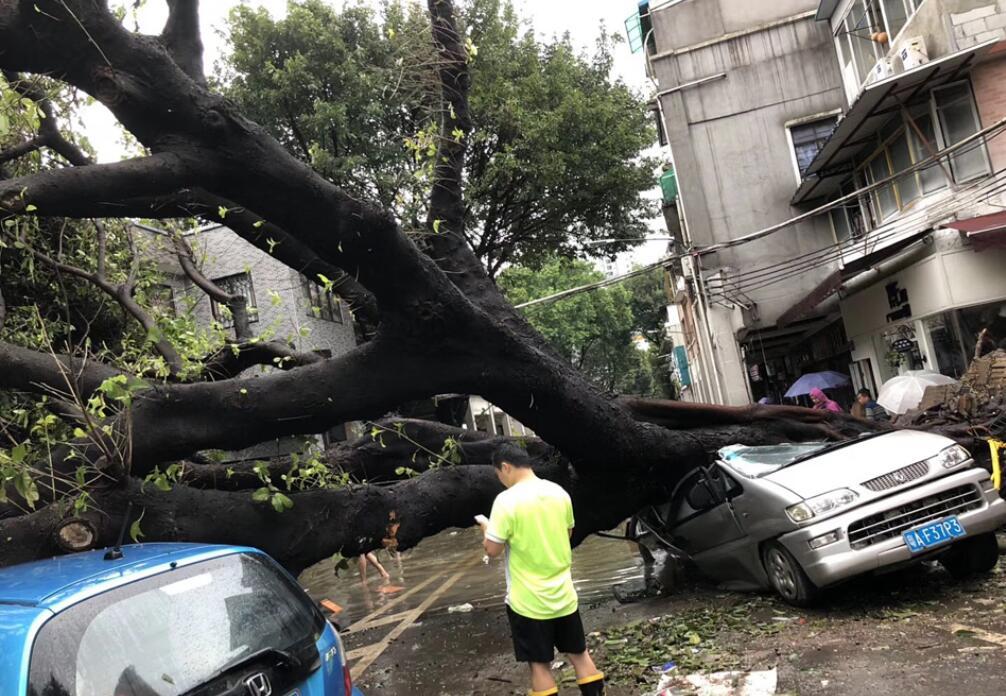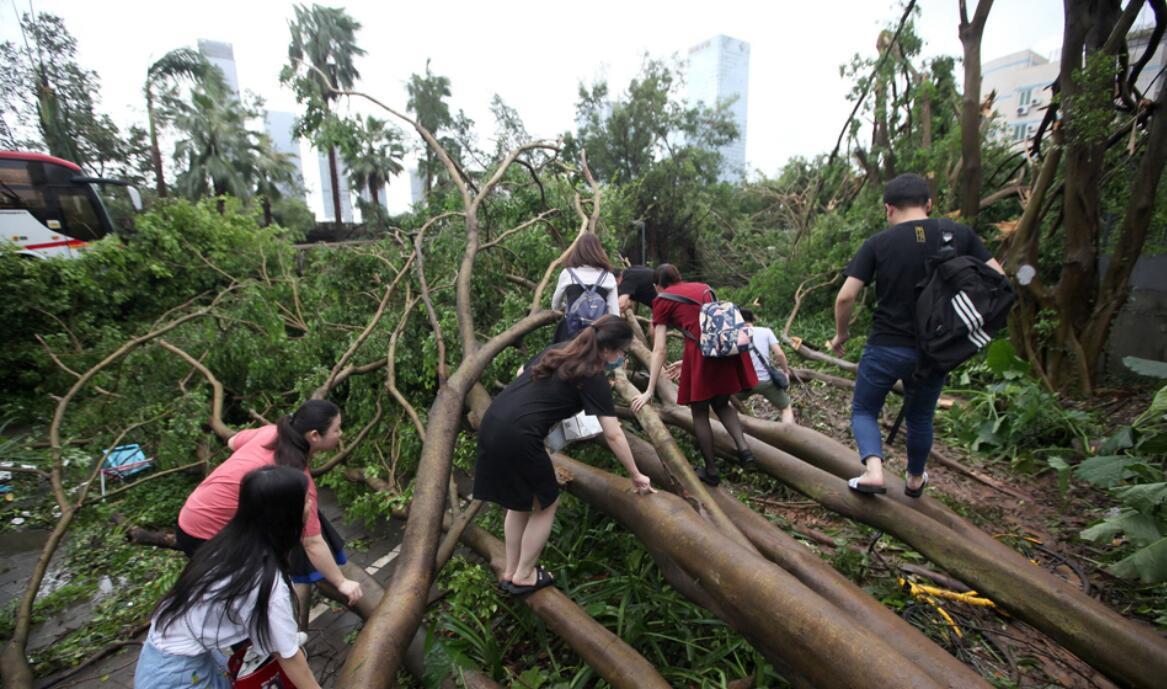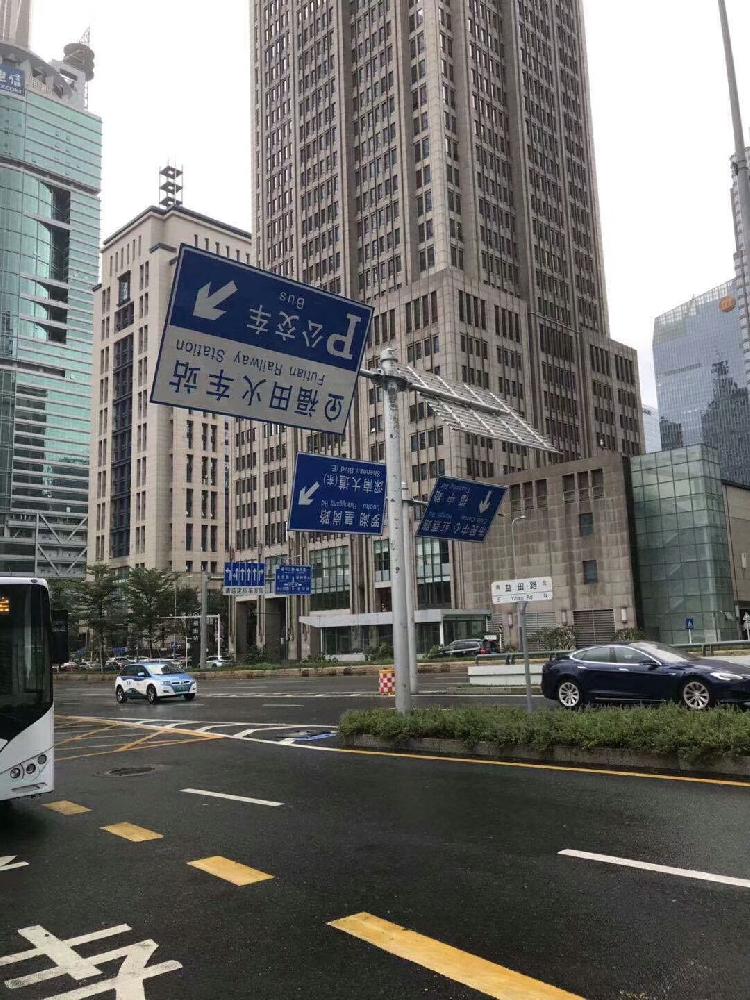Typhoon Mangkhut's aftermath ignited a hot debate on China's urban greening practice. Today, people in southern China's coastal city Shenzhen "climbing trees" to work. Many people are kidding that it's like wilderness exploration. The fact is that numerous trees were cutting down by the Mangkhut, their exposed roots showed some of the problem of the country's greening system: shallow-rooted transplanted trees; minor bio-diverse horticultural species; lacking long-term planning in urbanization d; shortsighted policymaker’s' preferred exotic tree species (referred as a corruption niche by some netizens in this debate) were fragile; etc.
40 years ago, Shenzhen was a small coastal fishing village with abundant natural intertidal mangroves system. During the past decades of high-speed development, the city lost most of its natural buffer by mudflats reclamation, replaced by prohibitive real estate. The rich people evacuated in the latest Typhoon made the topic hot again - their coastal high-rise home with oversized glass windows were heavily damaged in the extreme weather.
In fact, Shenzhen is a place near the sea, and there are a lot of mangroves in history. Mangroves are a special wetland ecosystem distributed along the beaches or estuaries in the tropics-subtropics. They are known as coast guards. They are natural barriers against typhoons, which can effectively prevent disasters and reduce disasters and protect the sustainable development of cities. In 1986, the great storm surge along the coast of Guangxi and the 2004 Indian Ocean tsunami made people see its magical effect. The loss caused by waves or tsunami was greatly reduced on all coasts with mangroves.
However, in the advancement of urbanization, people’s fear of nature is far from enough. The arrogance of human beings, the driving of economic interests, and the natural coastal ecosystems such as mangroves have been largely eroded by human factors such as land reclamation, sea reclamation, and felling. For example, in Shenzhen City, where the typhoon Mangkhut was encountered, the destruction of the typhoon is immeasurable.
Shenzhen, 40 years ago, was a small fishing village. After nearly 40 years of uninterrupted reclamation, Shenzhen has acquired a large amount of valuable land, and has turned the land into a luxury house and business district with a price of 10-15 million yuan. However, Shenzhen has lost 80% of its natural coastline, and with 75% of mangroves, the city’s contours have changed dramatically. Shenzhen’s urbanization process is a testimony to the 40 years of reform and opening, and it has also paid a huge ecological and environmental cost. In the face of extreme weather and natural disasters, this cost can be seen in the tip of the iceberg.
It has been reported that it is precisely because of the “aggression” of the urbanization process that natural forests such as mangroves are becoming les and less. Compared with the 1970s, the area of coastal mangroves in China has lost 73%. Suppose, today, if Shenzhen still maintains many native mangroves, what will happen to the typhoon Mangkhut?
There are limits to development, and human beings need to have awe of nature. Coordinating the harmonious development of people and nature and building an ecological civilization must follow the principle of sustainable development. As China’s economy moves toward “high-quality development”, people and nature as a “life community” are increasingly valued. Looking to the future, developing the economy cannot be at the expense of the environment, because there is a problem with “Inter-Generation Equity”. The rights of the present and future generations to equalize the use of natural resources, to satisfy their own interests, and to seek survival and development. Imagine if our generation was exhausted by the current arbitrariness and the consumption of the natural resources that our descendants depend on, what would the future generations do? After all, mangroves are a complete ecosystem that is difficult to recover once destroyed. This is a long process. Therefore, it is recommended that our urban planners and “top-level designers” need to input the thinking of ecological civilization and green design from the beginning to the aspects of urban planning and design management.






(Photo source: Internet)
Original Chinese article:
http://www.cbcgdf.org/NewsShow/4854/6188.html
By / Linda
